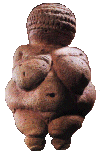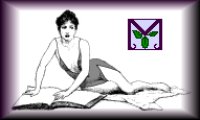The name of this goddess means 'house of Horus;' her sign corresponds to this since
it depicts a falcon in the house. In earlier times the sky goddess was regarded as
the mother of the sun-god until Isis replaced her. The concept of the sky as a cow,
which was widespread in the Delta, causes Hathor to be given bovine form. An 18th
Dynasty sculpture from Deir el-Bahari, now in the Egyptian Museum in Cairo, shows
Hathor as a cow protecting the king. Usually the goddess was shown in human form wearing
on her head the sun-disc flanked by a cow's horns. According to an ancient myth Hathor
was supposed to have raised the youthful sun up to heaven by means of her horns.
In the end the goddess who bore the sun was herself equated with the sun, being
regarded as the solar eye.
In the Old Kingdom Dendera was already Hathor's main
cult centre; this was heavily reinforced later when the great Ptolemaic temple dedicated
to her was built there. Her cult symbol was a round pillar surmounted by two cows' heads
or two female heads. The goddess was regarded as the 'female soul with two faces.'
In Thebes Hathor in bovine form was worshipped as a mortuary goddess. The dying person
wished to be 'in the following of Hathor' who also received the setting sun and, like
herself, preserved it from the powers of darkness. One of her most common attributes
was the sistrum, a rattle-like instrument. Hathor was also goddess of dance, music, and
love. Source: Illustr. Dictionary
of The Gods and Symbols of Ancient Egypt 11 Jan 1998
|
|







